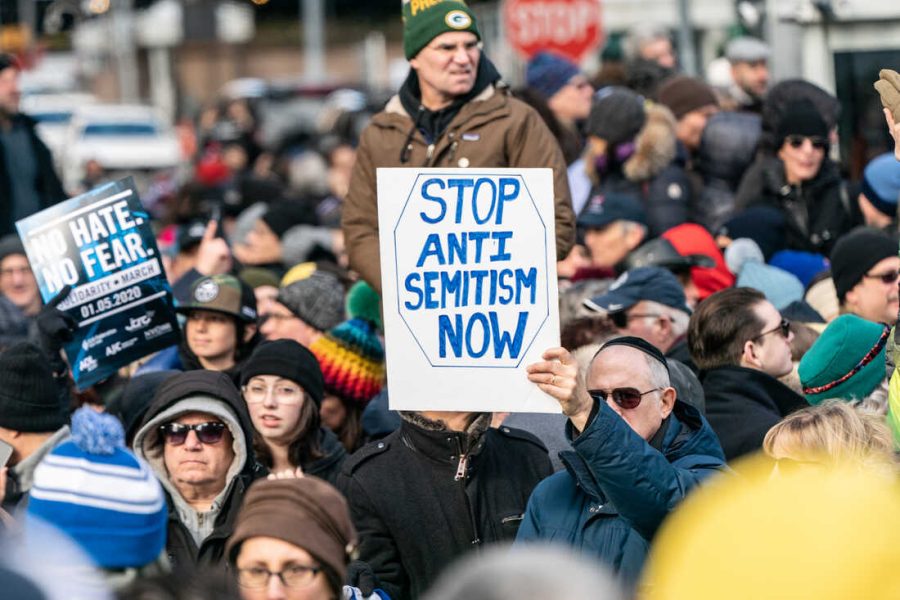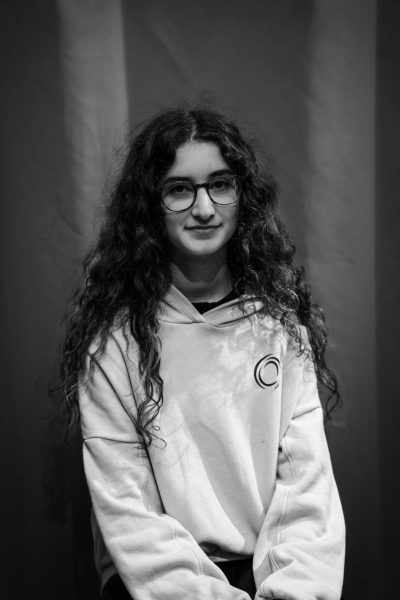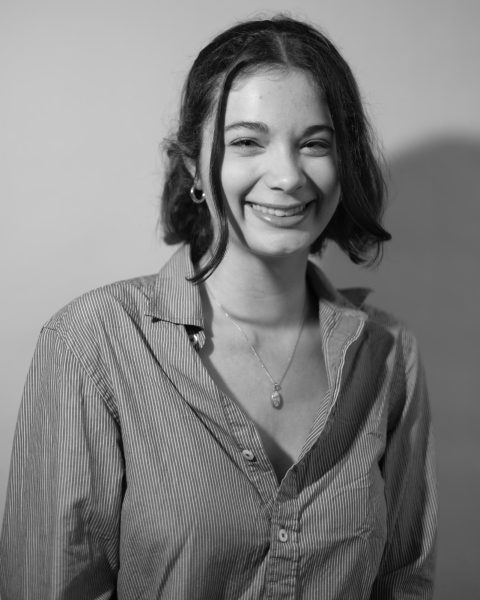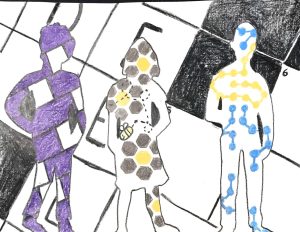Antisemitism: It Happens Here at CRLS
Pictured: Solidarity march in New York on January 5, 2020.
March 13, 2023
“I feel unsafe,” Naomi Pfeffer ’26 says about the antisemitic graffiti found in an arts building bathroom on Tuesday, January 31st.
Antisemitism has become more prevalent in the Cambridge school community, with three separate reports of antisemitic graffiti this year. These incidents have been incredibly harmful to students like Pfeffer, who feel targeted because of their identity.
However, nearly 75% of over 200 students surveyed by the Register Forum were unaware of the most recent antisemitic incident, likely due to a lack of clear communication. While a schoolwide StudentSquare notification was sent out, it was mostly about the upcoming Equity Matters event. To promote the summit, Principal Damon Smith wrote that “this incident [of antisemitic graffiti] underscores the importance of moving forward with our CRLS Equity Matters event.”
Administrators, on the other hand, had even more difficulty finding information—Cambridge School Committee members, for example, were not notified at all.
“A ball got dropped somewhere,” Rachel Weinstein, a school committee member, tells the Register Forum. “Normally we are informed.”
Not only was communication faulty in the recent email, but many felt that the wording was far too vague. The message avoided explicitly describing the graffiti, informing students only that an “antisemitic symbol” was found. This phrasing has been a pattern in every email about similar hate crimes.
“In order for us to reclaim power, we’ve got to name the thing we’re reclaiming,” teacher Tal Sebell-Shavit, advisor for the Jewish Heritage Club, says to the Register Forum. “The word swastika in and of itself is not taboo.” Sebell-Shavit believes that we must explicitly name swastikas and their history in order to begin to heal.
Superintendent Dr. Victoria Greer explains that CRLS is not allowed to disclose specific details about the antisemitic graffiti, because the hate crime is still being investigated by the police. “That’s not us really trying to lack transparency,” Greer says. Contrastingly, Principal Smith tells the Register Forum, “We really puzzled back and forth about how much to disclose.” He adds, “I don’t want to amplify their messaging.”
As CRLS attempts to move away from reactive responses, opportunities for support have shrunk as a result. The last email provided no guidance for struggling students, with nearly 90% of over 200 students surveyed reporting having had no in-class discussions following the recent graffiti.
Teachers like Ariel Serkin believe educators are not provided with specific enough resources to have conversations with their students about antisemitism. “Sometimes these issues become too generalized. You lose what actually happened, and it can be gaslighting to the people who are impacted,” she says to the Register Forum.
Manuel J. Fernandez, Chief Equity Officer, describes the current teacher equity workshops to be about “anti-bias in general. We talk about diversity, religion, race, and gender in general. We don’t spend any one day on antisemitism or racism, we combine it.” He said to the Register Forum.
Like many of CRLS’s administrative practices, this is one which educators and students feel is not representative or thorough enough. Dr. Greer tells the Register Forum that she believes CRLS is “a model” for other schools in preventing hate. Even models, however, have room for growth.
This article also appears in our February 2023 print edition.











